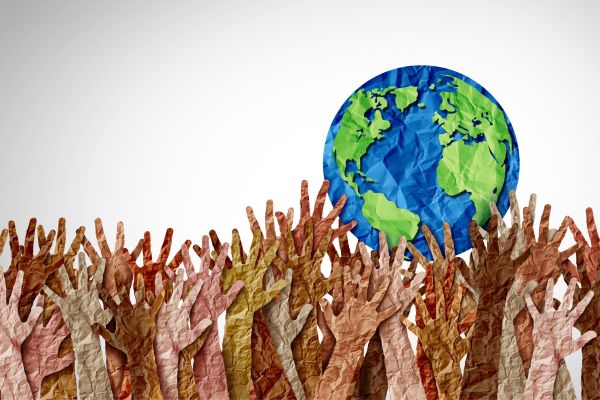Insights
INSIGHTS
All Topics
My Account
How to remove unconscious bias
05 May 2022by Joe Lepper
We look at the steps charities can take to tackle unconscious bias
The charity sector is still struggling to be diverse and inclusive in its recruitment and promotion of staff. Research released by the Charities Aid Foundation and accountancy body ICAEW found that this lack of diversity starts at the top, with charity boards failing to reflect a wide range of society.
It cites latest Charity Commission figures showing that less than one in ten of trustees are non-white, compared to 14% of the population. Meanwhile, less than a third are women.
In addition, the average age of trustees is 61, with younger trustees, aged under 24, a rare sight at charities’ top tables.
Diversity also needs to be reflected in promotion and marketing, to ensure imagery and language used is accessible and relevant to a wide audience.
While sexism, racism, and ageism sadly still exist in the sector, leaders at charities blighted by a lack of diversity are unlikely to admit they hold such discriminatory views.
This is often referred to as unconscious bias.
Here we look at what this form of prejudice is and how it can be overcome to ensure the charity sector can effectively promote diversity.
What is unconscious bias?
According to Imperial College London unconscious bias impacts everyone and is triggered as the brain automatically makes swift judgements and assessments on people. It describes the associations held that are outside of our awareness and control.
These assessments are based on our background, personal experiences, societal stereotypes, and cultural contexts. “It is not just about gender, ethnicity, or other visible diversity characteristics – height, body weight, names, and many other things can also trigger unconscious bias,” says Imperial College London.
It warns that unconscious bias can have a significant influence on our attitudes and behaviours, especially towards other people: “It can influence key decisions in the workplace and can contribute to inequality, for example in selection and recruitment, appraisals, or promotion.”
Raising awareness of unconscious bias
A good starting point for a charity looking to tackle unconscious bias in their decisions is to raise awareness of the concept across the organisation, among staff, volunteers, and trustees.
This should include offering unconscious bias training sessions, with advice including:
- Don’t rush decisions
- Record why decisions were made
- Make decisions as a team to mitigate against individual biases
- Be open about discussing biases and how the whole charity can address them
Blind skills challenges
Another useful way for charities to remove unconscious bias is to carry out blind skills challenges. These are particularly useful in tackling bias in recruitment.
Blind challenges include not looking at a candidate’s name, race, or gender and instead hiring on their ability to carry out the role alone. This often involves giving candidates assignments and tasks to carry out, which are then assessed ‘blindly’.
Standardised interviews based on the data provided tend to lead to better hiring decisions free of bias. This contrasts to less structured selection processes, where decisions are reached based on the personal views of one or a handful of senior staff.
Diversity in hiring decision
CAF and ICAEW’s report urges charities to actively promote diversity in hiring decisions, to ensure it is representative of society and its beneficiaries.
This promotion of diversity in recruitment is vital to ensure that charity leaders are not “homogenous in opinion and experience”, adding that their “different backgrounds” will be an effective way to “challenge old behaviours and bring new ideas”, says their report.
Charities should therefore promote roles more widely to introduce a greater range of people to roles in the sector. They are also urged to offer training to people outside of the sector to gain experience in charity roles.
For example, CAF and ICAW says for trustees this is particularly important, to avoid rejecting potentially excellent candidates for board level roles due to a lack of experience.
Be careful with words
The wording of job descriptions also needs to be checked. Does it cater for the distinct way of thinking that can be literal for some people on the autistic spectrum?
Another question to consider is will the wording put off women from applying? According to academics in the US, male dominated sectors and organisations tend to use masculine language more frequently, such as ‘leader’, ‘competitive’, and ‘dominant’.
In contrast job adverts for female dominated roles and organisations tend to use words such as ‘support’, ‘understand’ and ‘interpersonal’.
Be transparent and accountable
Charity staff and volunteers should be encouraged to speak out if they feel unconscious bias is impacting on decisions. There should be a clear whistle blowing process in place.
Setting targets and goals around diversity is also key, which the charity should be held accountable to through regular publication of data around ethnicity and gender in recruitment. These can help flag up areas of concern that charity leaders may not be consciously aware of.
The NCVO has free online guidance for charities looking to ensure they are accountable and transparent in tackling unconscious bias and promoting diversity.
“By being conscious of and actively challenging bias or prejudice we make sure no-one is treated less favourably because of who they are or what makes them different from other people,” states the NCVO.
“This requires a proactive approach to make reasonable adjustments that address the visible and invisible barriers people face.”
Our Events
Charity Digital Academy
Our courses aim, in just three hours, to enhance soft skills and hard skills, boost your knowledge of finance and artificial intelligence, and supercharge your digital capabilities. Check out some of the incredible options by clicking here.














